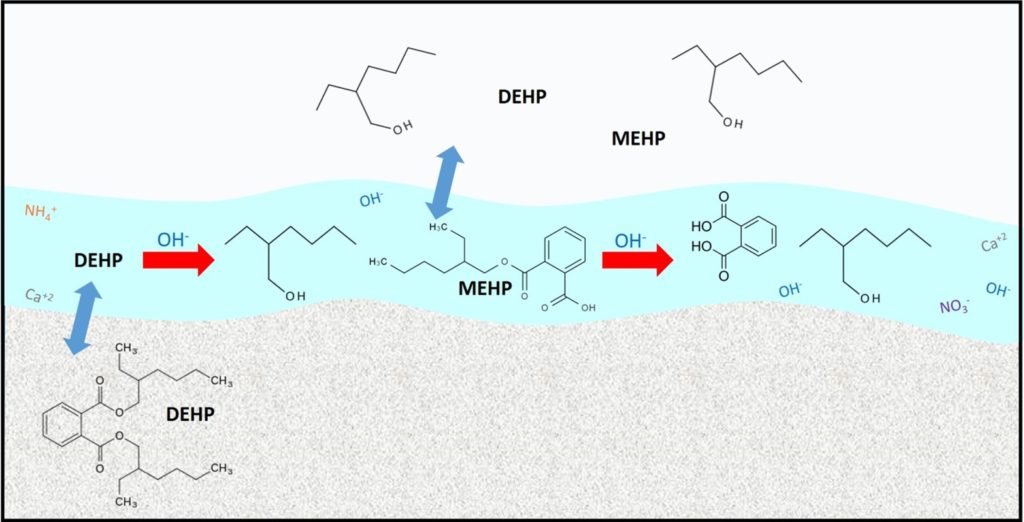Aqueous atmospheric chemistry moves indoors

We are proud to announce a new project, “Hydrolysis reactions on indoor surfaces: Impact on indoor air chemistry,” funded by the Sloan Foundation Chemistry of Indoor Environments program.
Certain man-made esters commonly found in building materials or consumer products, including phthalates and organophosphates, can negatively impact the air you breathe inside your home and other indoor spaces. These chemicals may be harmful to human health on their own, but they can also degrade on damp indoor surfaces to form toxic or irritating byproducts (see Figure). This process has been linked with worsening asthma symptoms and ‘sick building syndrome,’ but it is not well-understood.
In this study, we’ll use the principles of chemistry and physics to develop a numerical model that will enable us to predict when and where phthalates and organophosphates may degrade indoors, leading to negative health effects. We will also perform experimental measurements of these chemical processes in order to better quantify them. Through collaboration with other Sloan Foundation grantees, this model will be incorporated into MOCCIE, an integrated, multi-compartment model of indoor air quality.